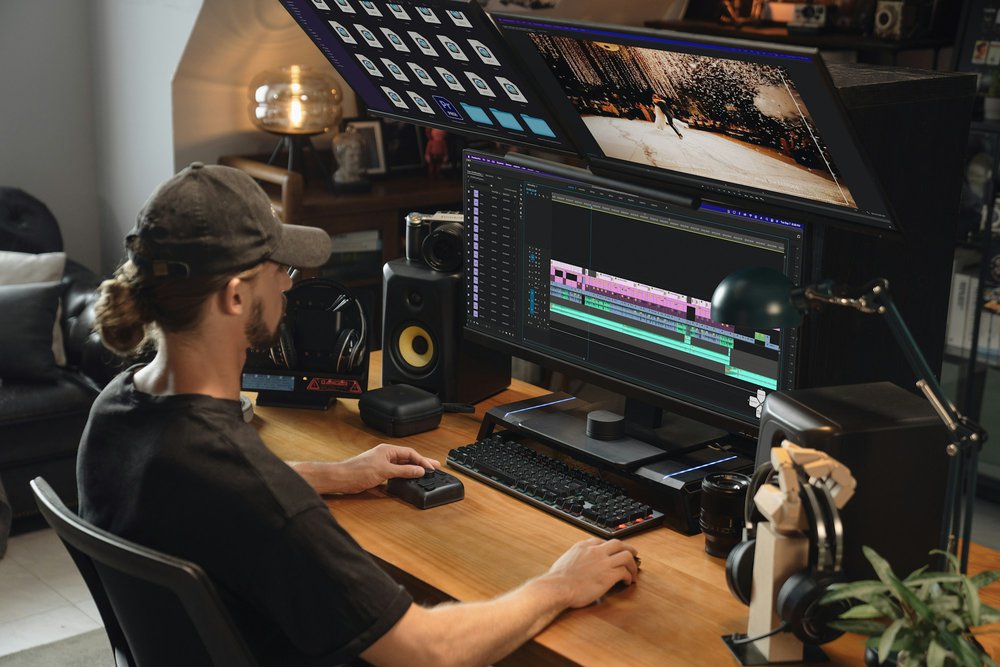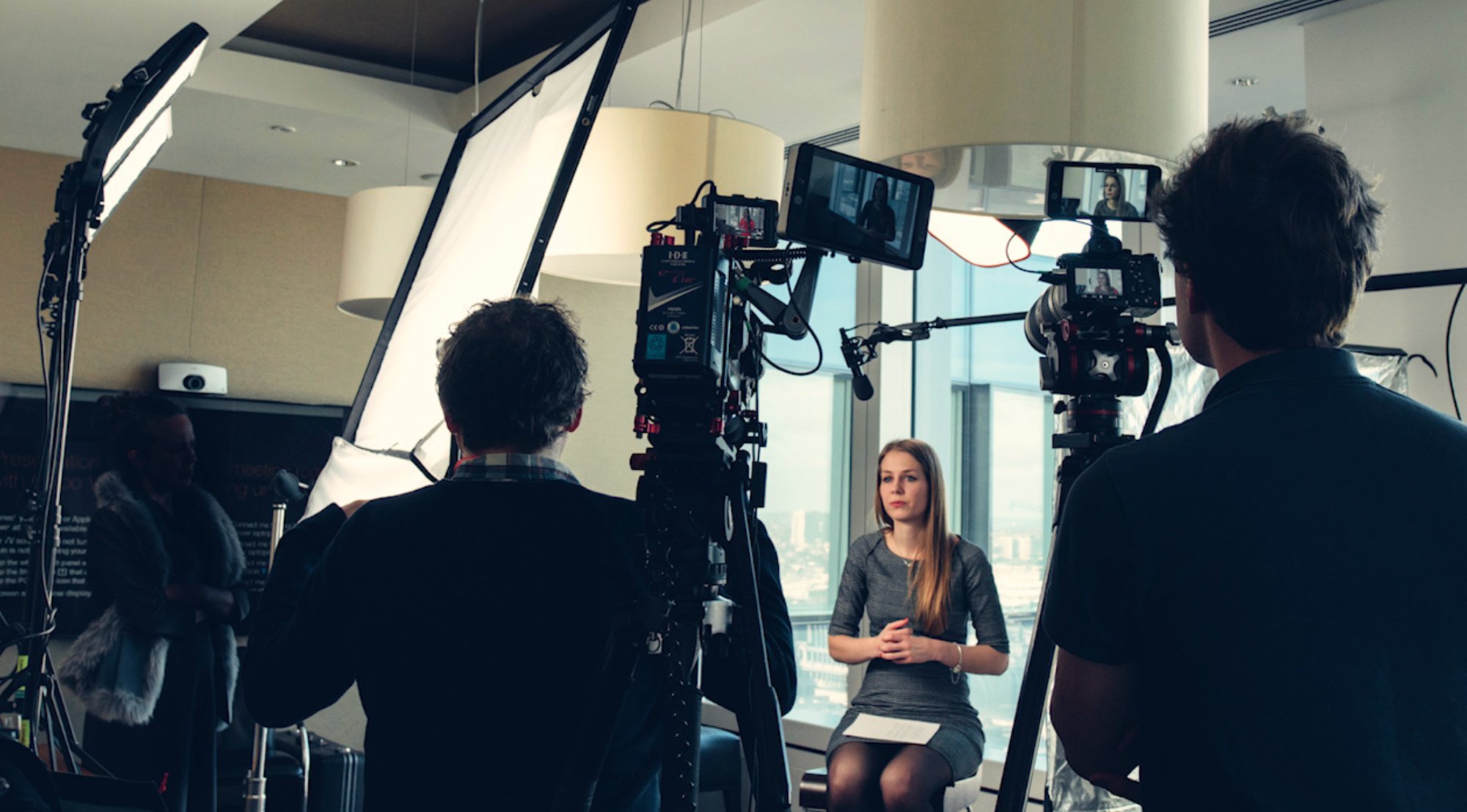Remote video production is transforming how businesses create video content by saving time, reducing costs, and simplifying logistics. Traditional video shoots often involve complex planning, expensive equipment, and on-site crews, which can be overwhelming for many companies and entrepreneurs. These traditional productions rely on direct, in-person collaboration between teams, whereas remote production replaces much of this in-person interaction with virtual coordination. Remote production offers a flexible, cost-effective alternative that enables you to capture high-quality footage without the usual hassles.
By leveraging a remote recording studio setup for both audio and video, you can produce professional-grade videos guided by an expert team from anywhere in the world, even if participants are in a different location. This approach has surged in popularity since the pandemic, with over 39% of broadcast professionals now adopting remote workflows to meet growing video demands.
In this article, we’ll walk you through the remote video production workflow, its key benefits, and how to scale your video content efficiently in 2025.
What Is Remote Video Production?
Remote production refers to the process of shooting, directing, and editing video content with a production crew operating from different locations. In this context, remote production refers to workflows where team members collaborate entirely remotely or in hybrid setups. Instead of assembling a full on-site crew, you collaborate with a remote team that manages equipment, filming, and post-production, often controlling cameras and lighting remotely. A remote director oversees and manages the filming process from a remote location, ensuring smooth communication and direction without being physically present.
This method allows for professional quality video without the need to purchase or rent expensive gear, making it accessible to businesses of all sizes. Thanks to advances in remote video production software and the necessity of a reliable internet connection, teams can work together in real time collaboration to deliver polished content faster than ever. With these tools, you can record and produce video remotely from any remote location, providing flexibility and modern solutions for video creation.
Let’s take a look at some of the most popular benefits of using remote video production for your next video shoot.
Key Benefits of Remote Video Production
- Cost-Effective: Avoid travel expenses and equipment rentals by working with a remote team that provides all necessary gear and expertise.
- Fully Remote Workflow: Benefit from a fully remote production process, allowing seamless collaboration, editing, and access to your project from any location without the need for physical presence or local storage solutions.
- Speed: Remote workflows accelerate production timelines by enabling immediate file transfers, efficient handling of large files, and quicker post-production.
- Scalable: Easily increase output to create more content without the overhead of traditional shoots.
- Expert Support: Access skilled producers, directors, and editors who maintain full control over the shoot, ensuring your video meets high standards, with a focus on high quality content and enhanced production quality.
- Flexibility: Film from the best location for your needs, whether that’s an office, studio, or home setup.
See the remote video Levitate Media completed for Canon here:
The Remote Video Production Workflow: Step by Step

1. Define Your Video Objectives
Start by deciding the type of video you want to create and its goals. This is part of the pre production phase, where planning and setting objectives are crucial. During pre production, assign each specific task to the right person, such as designating a team member to manage equipment or coordinate remote filming environments. Paying close attention to every detail at this stage ensures smooth collaboration and high-quality results. Common formats well-suited for remote production include:
- Testimonial Videos: Capture authentic client or employee stories on camera.
- Live Streams: Produce professionally managed live broadcasts with real-time editing.
- Product Demos: Showcase your product features through guided presentations.
- Culture Videos: Highlight company values and employee engagement remotely.
Clarifying objectives helps the production team tailor the shoot and post-production process to your needs.
2. Prepare Your Filming Environment
Set up your filming space to optimize lighting, sound, and background as part of a comprehensive remote video production setup. When working remotely, this might involve:
- Using natural light or professional ring lights.
- Minimizing background noise with quality microphones.
- Selecting a clean, distraction-free backdrop.
In traditional video production setups, a full crew—including camera operators, sound recordists, producers, directors, runners, electricians, makeup artists, and production designers—would be present to manage every detail. In remote setups, optimizing your environment is crucial for capturing high quality video.
Many remote video producers ship a studio-in-a-box kit containing cameras, lighting, microphones, and sometimes teleprompters. The remote team can control this equipment, guiding you to adjust settings for the best results.
3. Recording Remotely
During filming, video recording is managed remotely, allowing you to perform on camera while the remote production crew directs and handles all technical aspects from a distance. This setup makes it easy to record video remotely, as the team controls recording, camera angles, and lighting adjustments using specialized software and tools. If this is your first remote video production, you'll find the process straightforward and manageable, with clear stages and support from the crew. By leveraging these methods, you can produce high quality video content that looks professional and polished, even when working from different locations.
4. Post-Production and Delivery

Once filming wraps, the remote team handles editing, color correction, sound mixing, and finalizing the video. Thanks to cloud-based platforms, large video files transfer quickly, enabling editors to work immediately without waiting for physical drives. In contrast, traditional methods required shipping a hard drive to deliver the final video files, which added time and complexity to the process.
This streamlined process reduces turnaround times, allowing you to review and approve content faster than traditional workflows.
Scaling Your Video Content with Remote Production
Remote video production empowers businesses to scale their content creation efficiently. With minimal upfront investment, you can produce a higher volume of videos, such as talk shows, reaching wider audiences and maintaining consistent quality. Scaling with remote production also ensures the consistent delivery of high quality video, thanks to features like local recording and advanced production workflows.
By partnering with a skilled remote production team, you gain access to:
- Experienced producers and editors who understand your brand and objectives.
- Advanced software that supports ultra-low latency communication and real-time collaboration.
- Flexible scheduling that accommodates contributors across different time zones.
This adaptability makes remote video production an ideal solution for companies aiming to increase their video marketing impact in 2025.
Frequently Asked Questions
Can remote video production handle complex projects beyond interviews?
Yes, remote workflows now support animation, motion graphics, and multi-camera live shoots. Levitate Media’s Explainer Video Services combine remote collaboration with high-quality storytelling to handle diverse project types.
How do you ensure consistent branding with a remote team?
Maintaining brand consistency is achieved through detailed creative briefs, shared visual guidelines, and collaborative platforms. Levitate’s Marketing Video Services specialize in aligning remote productions with your brand’s tone and style.
What equipment do I need for a remote video shoot?
Basic setups often require just a computer or smartphone with a good camera and microphone. For enhanced quality, producers may provide kits with professional cameras, lighting, and sound gear. Learn more about remote video production kits.
How do I get started with remote video production?
Start by contacting a full-service remote video production team like Levitate Media. They will guide you through planning, filming, and post-production to create professional videos tailored to your goals. Explore our portfolio for examples of successful remote projects.
Leverage the power of remote video production to grow your video content efficiently and professionally. Reach out to Levitate Media today to begin your next project with expert guidance and cutting-edge technology.









